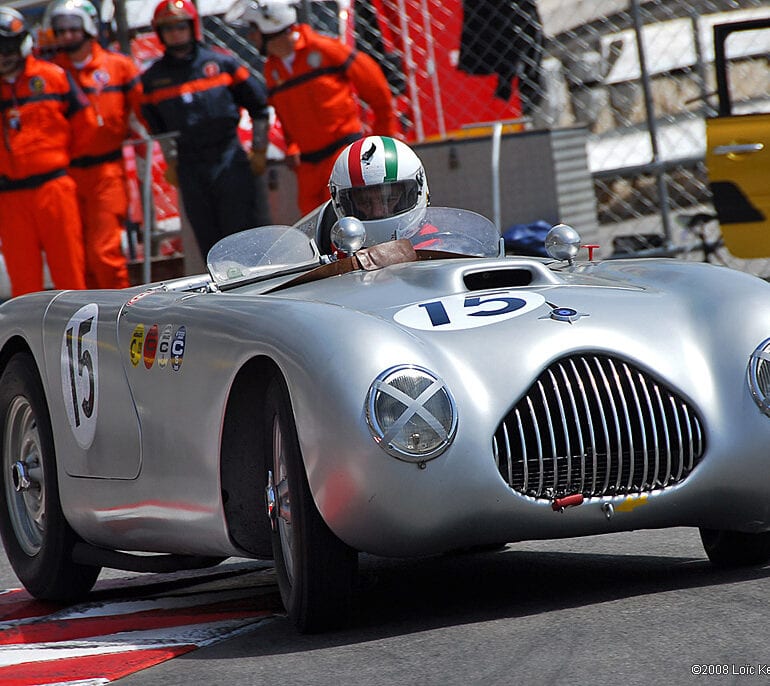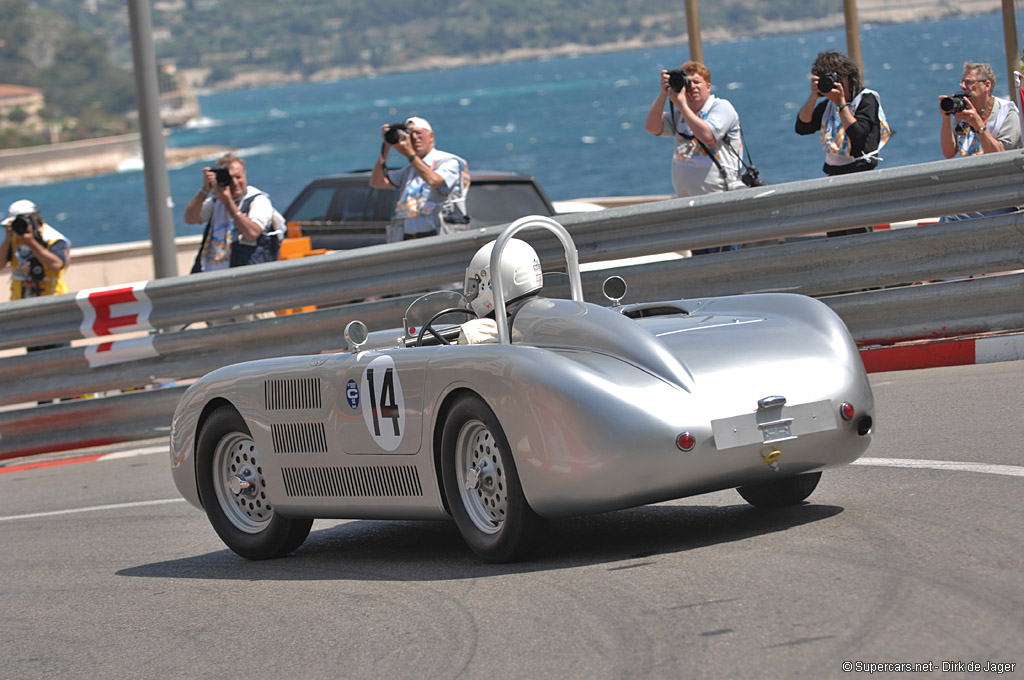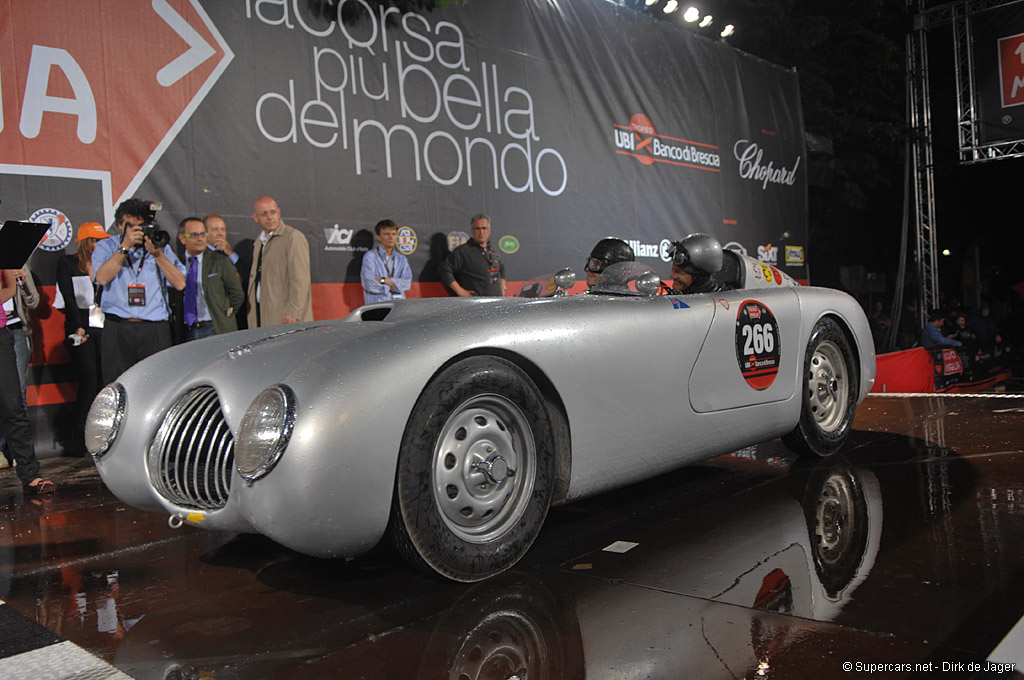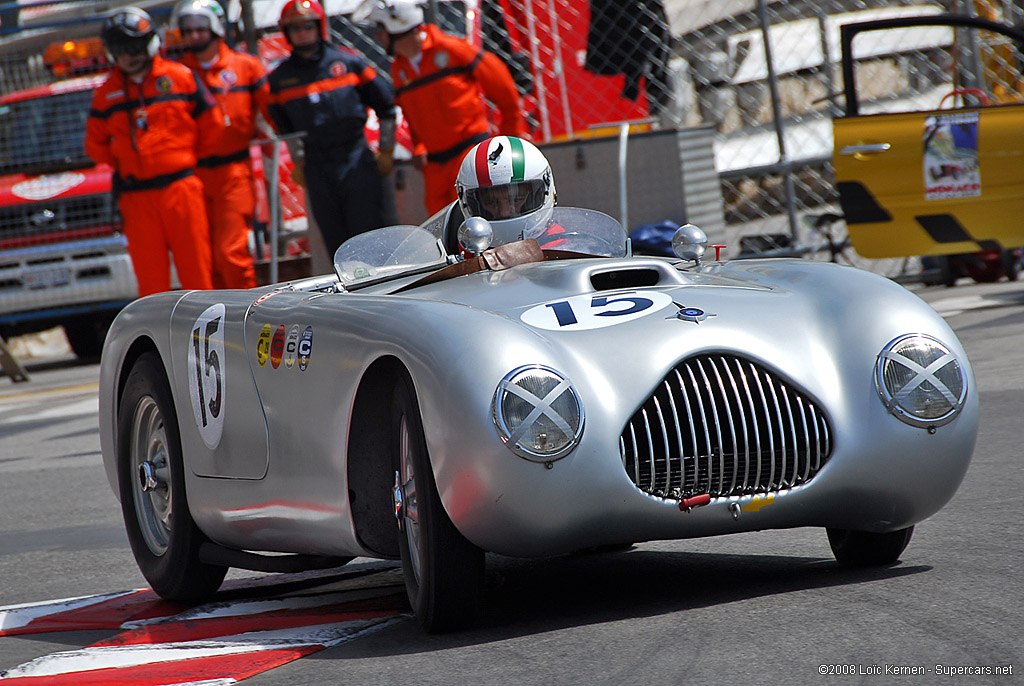1948 – 1952 Veritas Rennsport
In the immediate post-war period, very few companies were prepared to make race-cars and hardly any were constructed. Ernst Loof, Lorenz Dietrich and George Meier recognized this opportunity left by the virtual shut-down of German industry. So much so, they started Veritas just one year after the war ended in a small factory at Meßkirch, Baden-Württemberg.
The immediate shortage of supplies after the war meant that the new sports car had to use many recycled components. Naturally, many of these were sourced from Germany’s most important prewar race car, the BMW 328. Furthermore, Ernst Loof was an ex-BMW engineer and the very one that put together von Hanstein’s winning 1940 Mille Miglia Coupe. Loof knew the 328’s 6-cylinder engine was the most suitable power train available. The British understood this even more copied the design for a Bristol engine which powered numerous English sports cars.
In many ways the Veritas was a re-built BMW 328 with a new aerodynamic body. Some cars used the original 328 chassis with a complex network of tubes to support the larger aluminum body. The very first cars actually raced as BMW-Veritas. Later, objection from BMW meant that the model would be simply known as the Veritas Rennsport.
Around the BMW power train, the Veritas used a steel chassis and slab-sided aluminum body. Many cars were built from customer-supplied parts. Veritas could offer engine tuning upwards of 125 bhp. This package set a 2-liter speed-record of 147 mph on the Belgian Autoroute at Jabbeke. Direct competition came from the emerging Ferrari 166, Frazer Nash Le Mans and Osca MT4.
Following the return to stability and economic growth, Veritas enjoyed success during the rebirth motor sports. One of their first customers was Karl Kling who won at Hockenheim in 1947. He later scored a major victory at the 1949
ADAC Eifelrennen race on the Nürburgring. He averaged almost 100 mph around the circuit. These victories put Veritas on the map, but the supply of pre-war 328 components were drying up.
With a huge amount of orders on the table, Loof was forced to make an engine on his own. He employed the services of Heinkel Flugzeugwerke who took a break from their aircraft business to produce an engine similar to the 328’s. The new unit was cast entirely in aluminum rather than the original’s cast iron. Furthermore, it had seven main bearings, a square bore & stroke, hemi combustion chambers and three downdraught carburetors. Being built by hand, only 50 of these units were built before production haulted.
In 1951, a Veritas was converted into a single-seat Formula 1 racer known as the Meteor. Run under the F2 regulations, many cars contested the 1951 and 1952 German Grand Prix with mediocre results.
In 1949, Veritas relocated to Muggensturm and to the Nürburgring in 1950. Unfortunately, the performance capabilities of the car were suffering compared to the competition. The company tried to branch out and make road-cars known as the Komet, Saturn and Scorpion as well as produce a new engine by Heinkel Flugzeugwerke. With a short supply of money, even the reported 200 orders couldn’t save the company. By 1953, the small firm closed and Ernst Loof went back to BMW.
Production of the Rennsport was limited to about 20-25 cars of which 15 survive. Many had detail differences to suit the needs of each individual customer and the available supply of components.
Veritas Rennsport Images
See More Veritas Rennsport Images
Sales
In 2007 the Sports Car Auction company of Switzerland sold chassis 85123 at their Geneva Classics auction. The company sold it for a remarkable CHF 668’000 or $650,000 USD.
The sale described it as “restored to the original renn-spyder configuration. Although chassis 85123 took part in several races in Germany that year, its first recorded overseas race is with Dennis Poore in 1949 at Goodwood where it placed 6th at the September sportscar meeting. In the early 1960s it was given a more stylish body treatment before being sold to a Mr Beemsterborer. He intended to restore it to original, but this did not happen until in the 1980s it was bought by a German owner, from where it arrived in England where this work was carried out by the highly respected TT Workshops Ltd at a cost reputed to be over £100’000.”
In Detail
| type | Racing Car |
| production years | 1948 – 1952 |
| built at | Meßkirch, Germany |
| engineers | Ernst Loof |
| production | 22 |
| predeccesor | 1936 BMW 328 Roadster |
| succeccesor | 2010 Veritas RS III |
| engine | BMW Inline-6 |
| position | Front Longitudinal |
| block material | Cast Iron |
| valvetrain | Pushrod OHV |
| displacement | 1999.6 cc / 122.02 in³ |
| body / frame | Aluminum Body over Steel Tube Frame |
| driven wheels | RWD |
| curb weight | 545 kg / 1200 lbs |
| top speed | ~236.52 kph / 147 mph |
Sources & Further Reading
Frank, Len. ‘1947 Veritas Rennsportwagen’ Motor Trend. June 1983.







